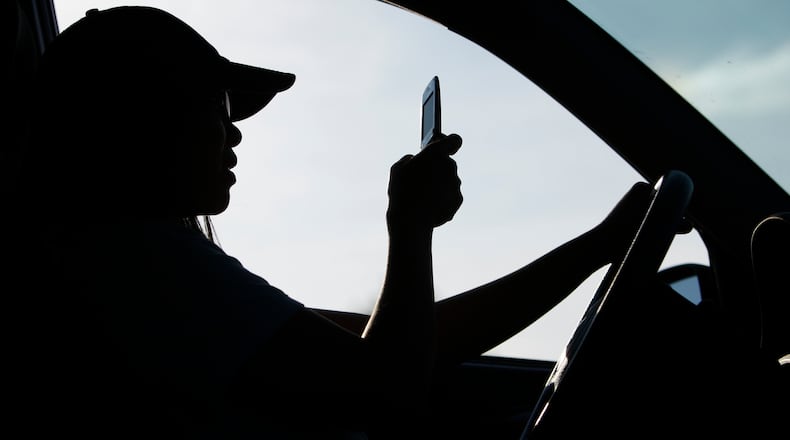House Bill 283, sponsored by Abrams and Brian Lampton, R-Beavercreek, would make looking at an electronic device while driving a primary offense, allowing police to stop and ticket drivers solely for doing that while on the road. It passed the House 77-11 and moves on to the Ohio Senate.
Originally the bill would’ve prohibited drivers from “holding or physically supporting an electronic wireless communications device with any part of the body, with certain exceptions,” according to a news release from the bill’s sponsors.
But state Rep. Bill Seitz, R-Cincinnati, amended the bill in committee Tuesday to say that it’s not a violation for a driver to hold a cellphone to their ear — only to be looking at it while driving. That would supersede current law, he said. Seitz also amended the bill to say that people could still use their phones while stopped at a traffic signal.
Abrams said the bill includes “common sense exemption” for emergencies and people like utility workers or police whose jobs require them to look at electronics.
If the bill becomes law, its implementation will include a “massive statewide education campaign,” she said. Police will only issue warnings for the first six months, and those ticketed for a first offense can waive the penalty by taking an online or in-person course on distracted driving, Abrams said.
The original bill would’ve made Ohio a “hands free state,” but the watered-down version is still worth voting for, said state Rep. David Leland, D-Columbus.
Lampton said 47 states already make distracted driving a primary offense. As an insurance agent, he’s seen how resulting accidents can be financially devastating, he said.
The bill includes a requirement for police to tell people they can refuse requests to search their electronic devices to see if they’ve been recently used, Lampton said.
It also requires police to track the race of every driver cited for violating the law, and that the attorney general report that data annually to ensure equitable enforcement, Lampton said.
In Ohio there were more than 91,000 distracted-driving crashes from 2013 through 2019, causing more than 47,000 injuries and 305 deaths, according to a House news release.
State Rep. Thomas West, D-Canton, sought to add a floor amendment to fund a program of implicit bias training for police, but House Speaker Bob Cupp, R-Lima, rejected it as not germane to the bill.
West said he would therefore oppose the bill, because it’s a “very big issue” to ensure police don’t target specific drivers.
“We’ve heard this time and time again from the minority community,” he said.
Supporting West, state Rep. Juanita Brent, D-Cleveland, cited the ACLU in saying Black motorists are only 14% of Ohio drivers but make up 75% of those stopped by police.
Abrams said police are required to take four hours of “diversity, equity and inclusion” training, including on implicit bias; but West said the implicit bias portion is not mandatory.
About the Author

